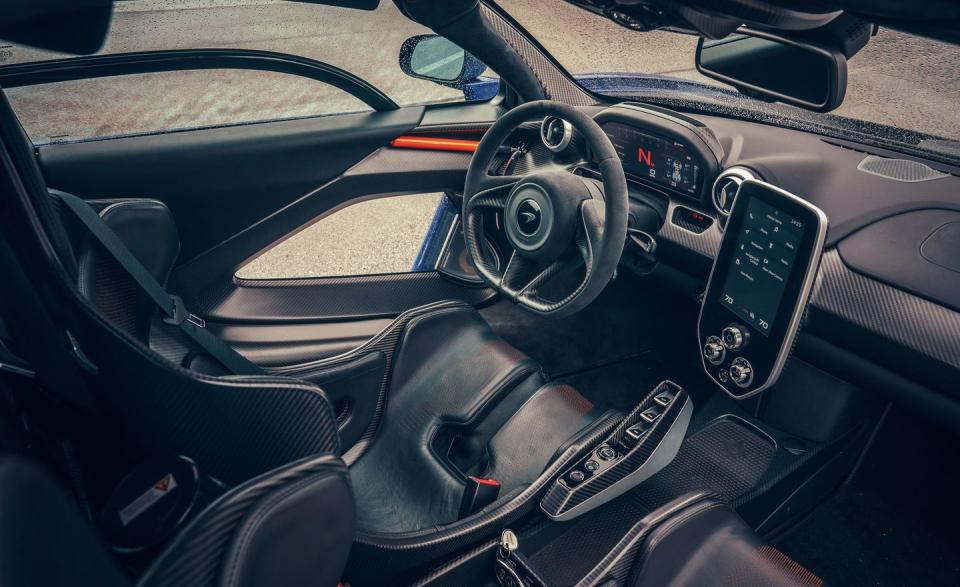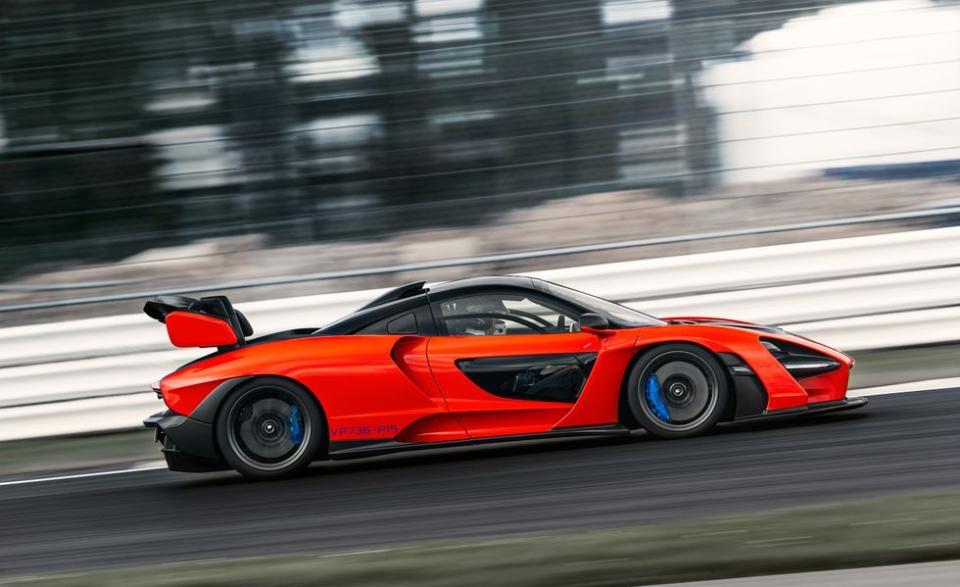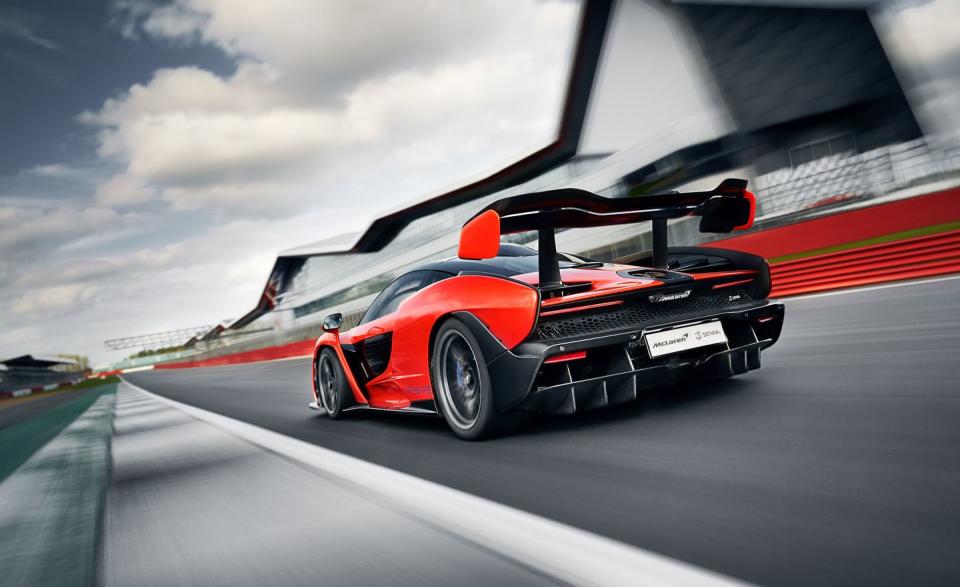The 2019 McLaren Senna Assaults All Your Senses—But Mostly Your Hearing

It seems like Conversations in restaurants and bars are becoming impossible. Unless the person across the table speaks with the forcefulness of a stage actor, it's hopeless. It seems rude to repeatedly ask someone to repeat themselves, so a polite nod replaces actual interaction. Did she just say that she once got so high, she signed up for LifeLock? Maybe she said she's ordering the gravlax. They have gravlax here?
There's zero problem hearing the McLaren Senna, which may explain our encroaching deafness. Floor it to 70 mph and your ears are overwhelmed by a cacophony of tire thrum, wind rush, engine roar, and gearbox whine. We measured 102 decibels' worth at wide-open throttle, the highest number we can recall. More than a few minutes in a Senna will make dinner that night a conversational minefield. Tucked into the unlined carbon-fiber tub and belted into the one-piece racing seat, you realize that you are the sound deadening.
While the 789-hp twin-turbo 4.0-liter V-8 is trying to smash your eardrums and vibrate your body's water out of suspension, the Senna ignores your plight and hurtles forward as if its goal is a Mars landing. Hold the accelerator pedal down for 5.1 seconds to bring up 100 mph; keep it planted for another 5.4 and you'll be at 150 mph. The launch-control system holds the engine at 3000 rpm and tells you when to release the brake. Forget SpaceX; a check for $964,966 can make you an astronaut today.
Some basic training is required. For example, getting out requires that you pull the door handle in the roof. McLaren puts the window switches up there, too, but the mail-slot side windows are more Countach than anything we've seen in 30 years. You might fit a Quarter Pounder through, but probably not a Big Mac. Instead of windows that open in a useful way, you can get glass in the bottom half of the door panel that provides a view of Earth as you approach what surely must be escape velocity.
Between the door handles is a button marked Race that takes an already focused car and drops the suspension 1.5 inches in front, 1.2 in back, and switches the dampers to their most aggressive setting. As the car drops, the active aero slats in the front and the giant wing in back set up for maximum downforce, which measures 1764 pounds at 155 mph. The three grades of stability control are as follows: fire-and-brimstone minister, three-martini lunch, and weekend in Vegas after a divorce. The full-off setting should come with a warning to take your protein pills and put your helmet on. Grip borders on ridiculous. Once downforce starts to pile up, there's way more available on-track than the 1.12 g's we registered on the relatively low-speed skidpad. The steering is precise and a little heavy but full of goodness, even at a slow roll. The brake rotors are a new material that's somewhere between the carbon-ceramic discs found on many current high-performance vehicles and the carbon-carbon units fitted to purebred race cars. It takes a serious amount of leg to get them to work, but stomp hard on the pedal and they'll stop the Senna from 70 mph in 136 feet.
The Senna's only visible concession to street use is the license-plate holder, which is why the car weighs a mere 3030 pounds. But it's not just your hearing that's assaulted by the Senna. It's an odd-looking thing, isn't it? Part Le Mans Prototype, part prehistoric shark, the shape was carefully formed in the wind tunnel to reduce lap times. While intimidating and futuristic, it's not an elegant machine. Apparently this is what it looks like when form blindly follows function.
Wait. Did you just say you like to watch Petticoat Junction? I do, too!
From the January 2019 issue
('You Might Also Like',)

 Yahoo Autos
Yahoo Autos 


